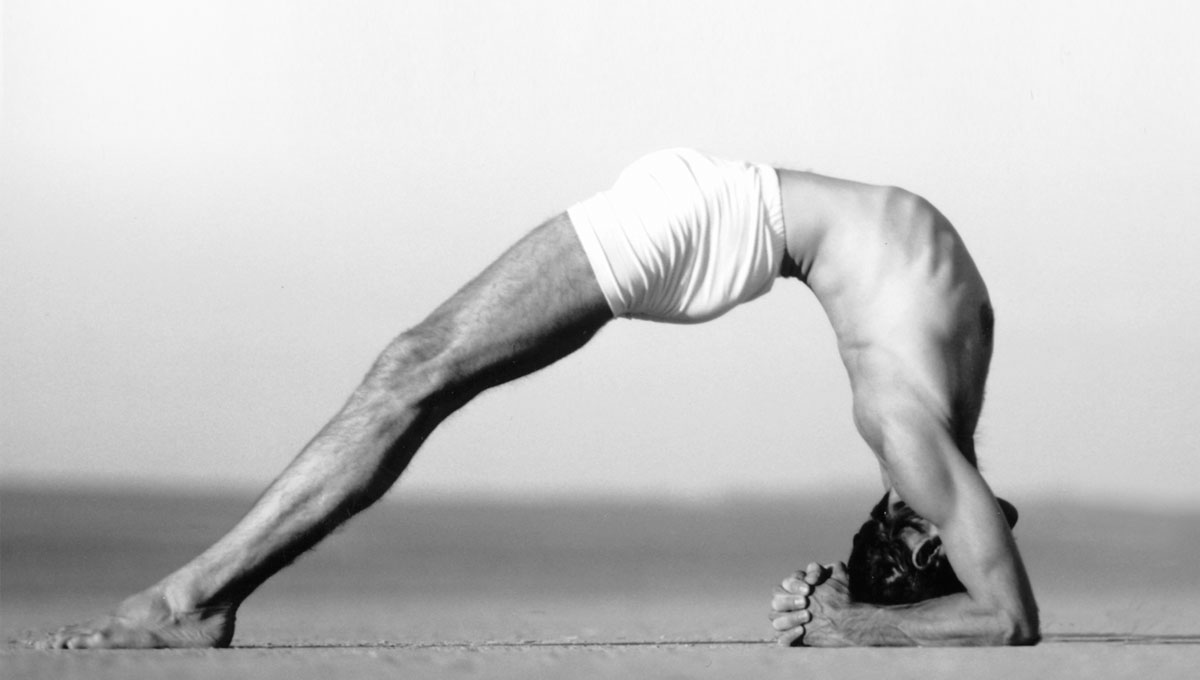
How can Yoga practitioners build a strong and sustaining life force? Is it simply a matter of gaining strength and flexibility? One way that we can think of generating vitality in the body is by strengthening the pulse or functioning of the kidneys. All the organs play a critical role in the body’s health, yet the kidneys are unique in their support of our overall life force. How we nourish the kidneys is a vital part of our practice.
The kidneys are located roughly in the middle of the body, suggesting the central role they play in the regulation of energy. The kidneys, along with the adrenals, communicate with the reproductive organs below them in the pelvis and relate to the lungs, heart and brain function above.
Energetically, they mediate our life force and in Chinese Medicine, they balance rest (yin) with activity (yang). They are the most deeply positioned organs in the body. Comparatively, the lungs, heart, and brain are more superficial. The depth and interiority of the kidneys—protected by the strong musculature of the back, and set deep behind the abdominal viscera in front—suggests the role the kidneys play as a source of our vitality. We could think of the kidneys as an underground reservoir of blood in the body. They are the well-spring of our prana in Yoga or qi in Oriental Medicine.
In structure and function, they are like sponges with small air pockets that serve to filter, wash, and cleanse the blood. Along with the liver, lungs and spleen, the kidneys serve to purify the bloodstream. Thus the kidneys are constantly engorged in blood, filtering 1,700 liters of blood per day (of which only 1-2 liters are secreted from the body as urine).
The liver, kidney, and spleen are the yin organs in Chinese Medicine, for they are blood-filled (the stomach and intestine by contrast are “hollow”). I like to think of these yin organs as our “blood banks.” Because they are blood-filled, the kidneys contribute to our overall fluidity and energy (shakti) in the body.
The kidneys are not held in place by fixed attachments—they “float” in a sense. However, due to the abundance of muscular tightness in the low back and a lack of support from the abdomen in front, the kidneys may become restricted. They may also prolapse, that is to drop downward. Jean-Pierre Barral, an osteopath and author of Visceral Manipulation notes, “Our estimate is that 25% of women over 50 years of age have renal ptosis, usually on the right side.” 1
How in Yoga do we prevent the kidneys from dropping or from becoming overly restricted? Twisting poses are invaluable for maintaining the fluidity and stability of the kidneys. Backbends, both done with support (as when the spine is propped by a chair, bolster or a set up of blocks) or practiced safely without support, can help to prevent the kidneys from prolapsing.
The kidney region is prone to compression and stagnation from a variety of factors. The primary factor is excess sitting, which can cause compression and tightness within the lumbar and low back muscles. Given that the kidneys are located directly against the sub-surface of the respiratory diaphragm, when the kidneys and the surrounding fascia are restricted, it may affect one’s capacity to breathe in fully on an inhalation. Also, the kidneys are vulnerable to restriction and stagnation due to a poor quality diet, one that includes high levels of sodium. Processed food and “fast food” is often laden with sodium. High levels of sodium can cause the body’s cells to dehydrate and the body tissues to swell (the presence of sodium increases blood volume).
Another contributing factor for kidney imbalance is anxiety and stress. In Chinese Medicine the emotion most often associated with the kidneys is fear. This is related, in part, to the action of the adrenal glands, which are located directly atop the kidneys, and govern the fight or flight response.
We can think of the kidney region (and the third chakra, the Manipura Chakra) as being the source for power and vitality. In right-handed people, the right kidney is a chief source of vitality (it is paired with the liver, the right lung and the right shoulder).
In addition to helping to maintain the position of the kidneys in the body, a Yoga practice can provide nourishment and support for the kidney area. Forward bends lengthen and stretch the low back region, while twists encourage the circulation of blood into the kidneys and their adjoining musculature. Backbends draw the kidneys and adrenals deep into the body, thereby stimulating the flow of kidney chi.
Meditation practice can replenish the kidney region when focus is on a steady long inhalation. The inhalation helps encourage greater suppleness of the diaphragm and serves to help increase circulation in the bloodstream. In general, mobility of the diaphragm influences the kidneys, making them more responsive. And in pranayama practice, the lungs are directly supported by the kidneys. This is why during seated pranayama (breathing practices), the lumbar and kidney region must be drawn upward and forward into the body. In Chinese medicine it is said that, “The lung is the canopy and the kidneys are the root,” and the lungs “reach down” to grasp the kidney chi. In yogic breathing, the kidneys support the expansion of the lung and chest cavity. In the circulation of our prana and our qi, the kidneys are strong anchors that interact with the lungs with every breath. When we take care of these internal yin aquifers of the body, we encourage greater vitality of the essential life-force of our shakti.
1. Visceral Manipulation II by Jean-Pierre Barral, Eastand Press.

